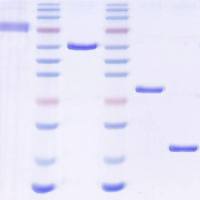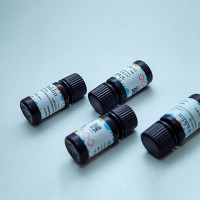Microarray technology enables the fast and parallel analysis of a multitude of biologically relevant parameters. Not only nucleic acid-based tests, but also peptide, antigen, and antibody assays using different formats of microarrays evolved within the last decade. They offer the possibility to measure interactions in a miniaturised, economic, automated, and qualitative or quantitative way providing insights into the cellular machinery of diverse organisms. Examples of applications in research and diagnostics are, e.g., O-typing of pathogenic Escherichia coli , detection of bacterial toxins and other biological warfare agents (BW agents) from a variety of different samples, screening of complex antibody libraries, and epitope mapping. Conventional O- and H-serotyping methods can now be substituted by procedures applying DNA oligonucleotide and antibody-based microarrays. For simultaneous and sensitive detection of BW agents microarray-based tests are available, which include not only relevant viruses and bacteria, but also toxins. This application is not only restricted to the security and military sector but it can also be used in the fields of medical diagnostics or public health to detect, e.g., staphylococcal enterotoxins in food or clinical samples. Furthermore, the same technology could be used to detect antibodies against enterotoxins in human sera using a competitive assay. Protein and peptide microarrays can also be used for characterisation of antibodies. On one hand, peptide microarrays allow detailed epitope mapping. On the other hand, a set of different antibodies recognising the same antigen can be spotted as a microarray and labelled as detection antibodies. This approach makes it possible to test every combination, allowing to find the optimal pair of detection/capture antibody.






